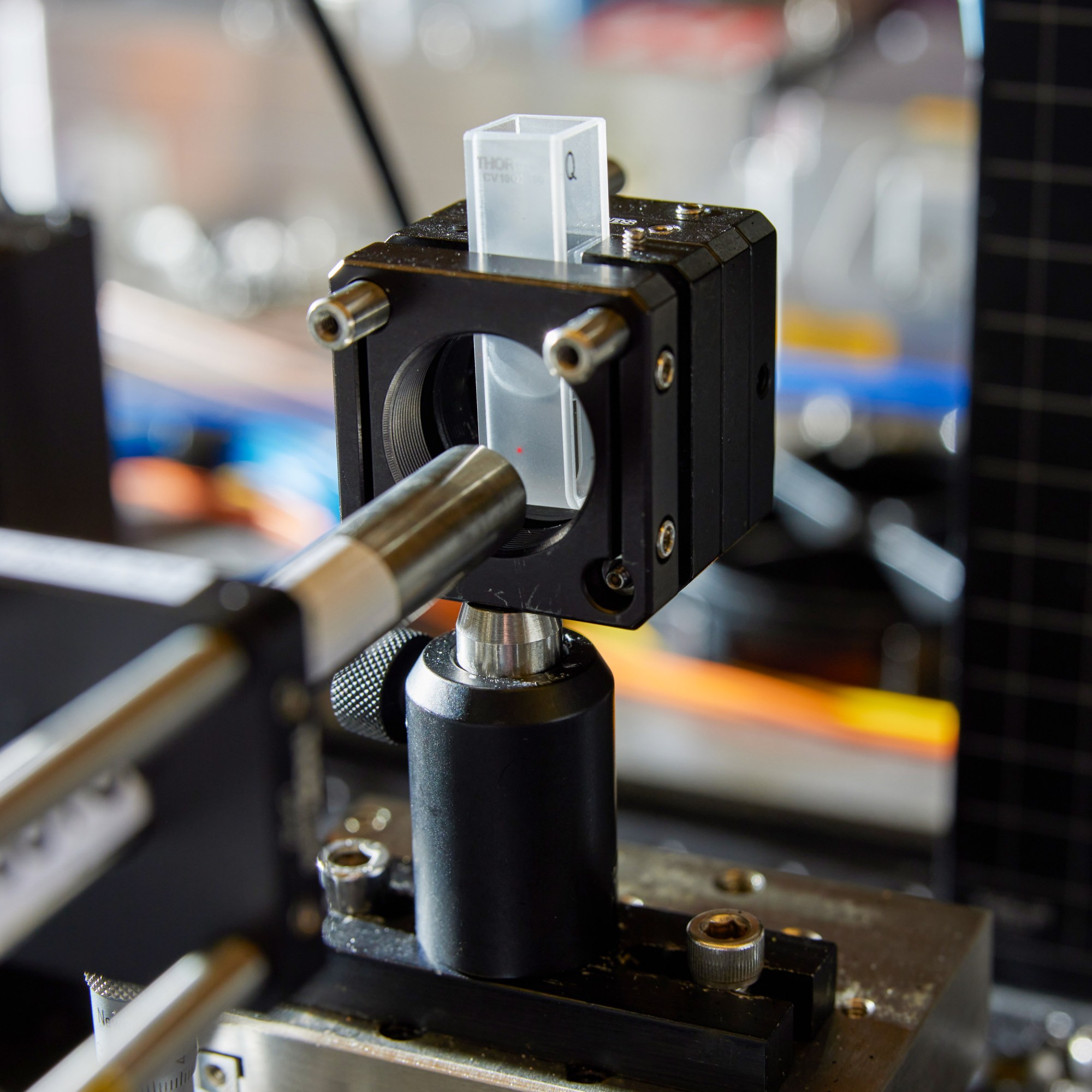“The problem with spectrometers is that they have this intrinsic trade-off,” Persits says. The more light that goes into the spectrometer itself—specifically, into the color-separating diffraction grating and the detector—the harder it is to separate photons by wavelength, lowering the resolution of the resulting chemical snapshot. And because Raman light is so weak, researchers like Persits need to gather as much of it as possible, particularly when they’re searching for chemicals that occur in minute concentrations. One way to do this is to make the detector much bigger—even room-size, in the case of astrophysics applications. This, however, makes the setup “exponentially more expensive,” she says.
Raman spectroscopy on the go
In 2013, Persits had bigger things to worry about than errant photons and unwieldy spectrometers. She was living in Tel Aviv with her husband, Lev, and their one-year-old daughter. She’d been working in R&D at a government defense agency—an easy, predictable job she describes as “engineering death”—when a thyroid cancer diagnosis ground her life to a halt.
As Persits recovered from two surgeries and radiation therapy, she had time to take stock of her life. She resolved to complete her stalled master’s degree and, once that was done, begin a PhD program. Her husband encouraged her to apply beyond Israel, to the best institutions in the United States. In 2017, when her MIT acceptance letter arrived, it was a shock to Persits, but not to her husband. “That man has patience,” she says with a laugh, recalling Lev’s unflagging support. “He believes in me more than me.”
The family moved to Massachusetts that fall, and soon after, Persits joined the research group of Rajeev Ram, a professor of electrical engineering who specializes in photonics and electronics. “I’m looking for people who are willing to take risks and work on a new area,” Ram says. He saw particular promise in Persits’s keen interest in research outside her sphere of expertise. He put her to work learning the ins and outs of Raman spectroscopy, beginning with a project to analyze the metabolic components of blood plasma.
“The first couple of years were pretty stressful,” Persits says. In 2016, she and her husband had welcomed their second child, another girl, making the pressures of grad school even more acute. The night before her quantum mechanics exam, she recalls, she was awake until 3 a.m. with a vomiting child. On another occasion, a sprinkler in the lab malfunctioned, ruining the Raman spectrometer she’d inherited from a past student.
“We can have real-time assessment of what’s going on. Are our plants happy?”
Persits persevered, and things started to settle into place. She began to build on the earlier work of Ram and optical engineer Amir Atabaki, a former postdoc in the Ram lab who is now a research fellow at the Lawrence Berkeley National Laboratory in California. Atabaki had figured out a fix for that fundamental Raman trade-off—the brighter the light, the lower the resolution of the chemical snapshot—by using a tunable laser that emits a range of different colors, instead of a fixed laser limited to a single hue. Persits compares the process to photographing a rainbow. A traditional Raman spectrometer is like a camera that takes a picture of all the rainbow’s colors simultaneously; the updated system, in contrast, takes snapshots of only one color at a time.
This tunable laser eliminates the need for the bulkiest, costliest parts of a Raman spectrometer—those that diffract light and collect it in a photon-gathering sensor. This makes it possible to use miniaturized and “very simple” silicon photodetectors, Persits says, which “cost nothing” compared with the standard detectors.

KEN RICHARDSON AND REBECCA RODRIGUEZ
Persits’s key innovation was an exceptionally sensitive probe that’s the size of a large marker and is connected to the laser via a fiber-optic cable. These cables can be as long (even kilometers long) or short as needed. Armed with a tunable laser, simple photodetectors, and her robust, internet-enabled probes, Persits was able to develop both her handheld Raman device and the larger, nonportable version. This second system is more expensive, with a vibration-damping table needed for its sensitive laser, but it can support dozens of different probes, in essence offering multiple Raman systems for the price of one. It also has a much broader spectral range, allowing it to distinguish a greater variety of chemicals.
